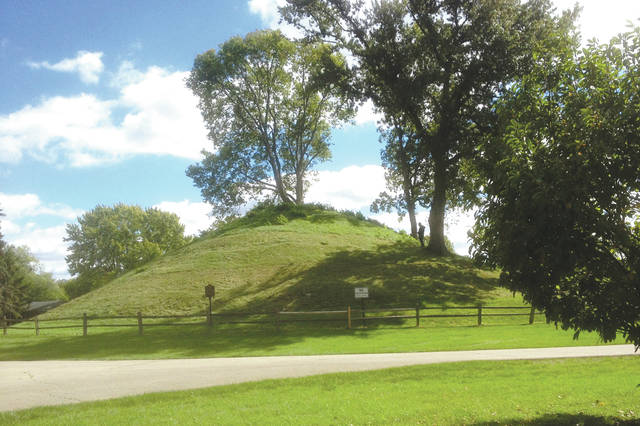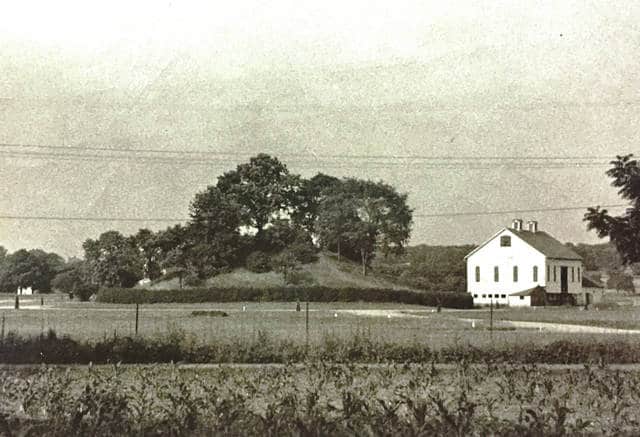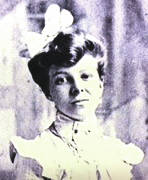



ENON – The Enon Community Historical Society (ECHS) is erecting two historical plaques this month at two locations in the Village of Enon.
According to ECHS media representative and longtime member Ann Ingoldsby, the plaques will provide a brief glimpse into the history of the village. One plaque will be erected at the Enon Adena Mound and will provide information about the largest conical mound in Clark County. The second plaque, which will be erected at Settler’s Park, will include information about noted Americans who once made Enon their home.
“The people erecting the signs were here last week and met with ECHS President Tim DeVore to mark the sites for the signs,” Ingoldsby said. “They are planning on erecting the signs as early as this week.”
Listed in the National Register of Historic Places and owned by the Village of Enon, the Enon Adena Mound is located south of the Enon Government Center just off Indian Drive and surrounded by Mound Circle. The popular landmark, once known as the Knob Prairie Mound, is the second largest conical mound in Ohio, with the Miamisburg Mound holding the distinction of being the largest mound of this kind. Those who have studied the mound believe it was built by the Adena culture that existed from 1000 to 200 BC.
Although there is little verified published information about it, the ECHS has collected some historical statistics about the mound over the years. Located on then the Knob Prairie Mound Farm, Gen. George Rogers Clark reportedly used the mound in 1780 as a vantage point prior to the attack on the Shawnee Village of Pickaway, located less than two miles to the north. According to the shared story, the general sent several members of his cavalry to the top of the mound to check out the surrounding country before he and a thousand soldiers marched toward Pickaway.
There were also reports that William Henry Harrison made a speech from the top of the mound during his campaign for president in 1840. In order to make an impression on the people, he had a flagpole planted on the top of the mound, which promptly sunk.
In 1989, the ECHS removed the hedge around the mound and installed a split rail fence. An apple tree placed on top of the mound was the inspiration for the Enon Apple Butter Festival, which the ECHS first established in 1979.
Ingoldsby said no reliable report exists as to any professional exploration of this mound or any Adena artifacts, but there is a brief account of a partial excavation described in “Beer’s History of Clark County.” Reportedly, the mound was opened between 1870 and 1880 by a group of young explorers. An indentation on the northwest side of the mound and an irregular area where the dirt was thrown is very likely the result of this excavation.
The explorers reported that they dug down through the center of the mound and found a room of stone construction that was shaped like a bake oven and high enough to stand inside. It tapered down on the sides and it appeared to have a crawl tunnel on the west side. In the center, there supposedly was a pile of dirt and stone resembling an altar on which small animal bones, charcoal, and decayed wood were discovered. The diggers said they carved their names on the altar, filled up the excavation, and left. There was no mention of artifacts or burials. However, the young explorers had little or no archeological training. Therefore, it is unlikely they would have recognized any artifacts or evidence.
The mound was the center of a large dirt racetrack during the early 1900s. At that time, thoroughbreds raced and won governor’s cups at state fairs. Evidence of the racetrack still exists on lot No. 7 on Meadow Lane.
In 1952, Paul Pence sold the 84.64-acre Knob Prairie Mound Farm to Charles Beaver, who developed and built Indian Mound Estates and deeded the mound to the village in 1953.
Although once 49 feet high, the mound is presently only 40 feet high, encompasses over one acre, and is 574 feet in circumference. The estimated 12,800 cubic yards of top soil would require 2,133 trucks to move it.
The ECHS is also erecting a sign in Settler’s Park that will pay tribute to six former citizens of the village, who have had a claim to fame locally and nationally. The sign will include information about Lydia Shellabarger, the first woman mayor east of the Mississippi River; Stephen and Elizabeth Reeder, relatives of Wilbur and Orville Wright; their son the Rev. Jacob Reeder, who was a co-founder of Antioch College; Honor Flight Founder Earl Morse; and former NASA Astronaut Virgil ‘Gus’ Grissom. The former Enon resident was a test pilot at Wright-Patterson Air Force Base when he was chosen as an astronaut.
“The signs will be of durable construction and will contain graphics as well as information regarding the mound and facts on the history of Enon,” said Ingoldsby. “They will be very nice.”





